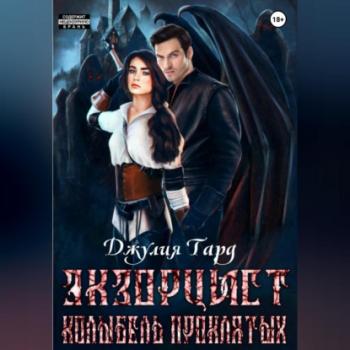Автор
Все книги издательства АвторПриёмная Мама и Робкий Сын
– Я видела, как ты на меня смотришь!– Я…– Маленьким мальчикам нельзя так смотреть на новую жену своего отца…– Я уже не маленький! Мне 20!– А это мы сейчас посмотрим! Она приблизилась максимально к его лицу и горячее дыхание обожгло его губы…– Дрожишь, как «маленький», но уже я чувствую, что ты очень даже «большой»…– Мы не должны…– Снимай, я сказала!Подпишись на автора Новые рассказы каждую неделю. Это короткий эротический рассказ. В нём есть все необходимое для вкусного чтения. Саманта Джонс – автор нового уникального жанра психологической эротики. Только в ее рассказах фокус на самых острых чувствах и переживаниях героинь. Все истории основаны на терапевтических практиках психолога, на откровениях пациентов с различного рода сексуальными пристрастиями и фетишами. Загляни в библиотеку автора.Содержит нецензурную брань.
Операция «Закрепление звука». 100 простых и эффективных игр для автоматизации и дифференциации звуков
Вы поставили ребенку звук. А что дальше? А дальше открывается удивительный мир автоматизации и дифференциации звуков. Мы с ребенком погружаемся в интересные игры, которые помогают ему закрепить коварный звук в речи или научиться слышать разницу между смешиваемыми звуками. Проводником в этот мир будет эта книга. 100 разнообразных и эффективных игр уже ждут вас на страницах.Каждая игра простая в подготовке, но эффективная. Если все делать правильно, то результат не заставит долго ждать. После нескольких занятий по этой книге вы уже увидите первые маленькие или большие результаты. Открывайте книгу и играйте со своим ребенком.
Исцеляющий свет просветления
Ясное мышление или как снять кармические блоки. Совершенство означает то, что приводит вас к радости. Мудрость – фактор, который является причиной для этого. Смотрите на всё, что происходит с вами, как на происходящее с тем, чтобы вести вас к просветлению. У нас есть потенциал Вселенной, хотя мы можем быть ограничены нашими убеждениями в нашей реальности. Один из важных инструментов раскрыть энергии – йога. Йога – это концентрированная энергия осознания. Это не энергия вне сознания, а скорее энергия, которая проявляется вместе с сознанием, когда оно освобождается от мысли. Объединив разум, тело и энергию мы достигаем ясного мышления для достижения благосостояния!
Что за Х?
Это моя первая книга , которая родилась буквально из воздуха . О чём она ?Не прочтешь не узнаешь . Публикуется в авторской редакции с сохранением авторских орфографии и пунктуации.
Теневые хроники
Финалист лонг-листа конкурса ЛитРес «Страшные истории» 2022 года.Семейные хроники, лишившиеся своего законного владельца, попали в руки девочки-подростка Славы и её нового друга Макара. Что делать, если истории оказались до жути реальными? Запереть их обратно в сундук? Или… Что выберет Слава? Какие последствия ждут мир?
Ганс
Рассказ о девушке Ангелине, живущей у бабушки. Её подруге Ярославе и парне Гансе. У Ангелины и Ярославы были необычные способности. Как оказалось, у Ганса тоже. Ганс был долгие годы влюблен в Ангелину. Как-то Ангелине приснился вещий сон о катастрофе, и когда она пошла на свидание с Гансом, она смогла предотвратить их смерть, и необычное первое свидание сблизило их.
Экзорцист. Колыбель Проклятых
Оказавшись в аббатстве святой Батильды, Марии придётся открыть тайну, которая способна раз и навсегда изменить её жизнь…Содержит нецензурную брань.
Глазами суицидника
Мистическая фантастика, основанная на реальных событиях. Суицидник Симон устал жить на земле и закончил жизнь самоубийством. Но у его души, оставшейся без тела, проблем меньше не стало, наоборот, проблемы только прибавились, а потом ещё и приумножились. Какие удары примет на себя заблудшая и запутавшаяся душа и какие будет искать выходы? Какие новые навыки придется освоить, чтобы хоть как-то поправить положение. И есть ли вообще возможность искупить такой большой и страшный грех? Ответы на эти и другие немаловажные вопросы может подсказать вдова самоубийцы, которая имеет связь с любимым мужем через сновидения. Она помогла собрать материал из снов и необъяснимых явлений. Ну и фантазия автора, которая сплела череду событий в одну интересную книгу.
Попаданка под прикрытием
Оборотни и драконы – для попаданок бесполезны. А то и опасны. Этот урок Арина выучила с болью и на собственном опыте. Поэтому больше ее в ловушку животной харизмы и зверского магнетизма не заманить. Тем более, человеку без магии на Перекрёстке точно ничего не светит. Но этот наглый дракон, кажется, не собирается спрашивать ее мнения… В тексте будут: # хрупкая, но сильная духовно героиня # герой – наглый бабник, с трудом поддающийся воспитанию # драконы и оборотни #расследования и интриги #неизменный хэппи-энд!
Попаданка на Перекрёстке
Перекрёсток – мир больших возможностей! Но точно не для попаданки. Забор с колючей проволокой, строгий режим, и грядущие экзамены, от которых зависит, останется Марианна в цивилизации с водопроводом и магией, или же ее выкинут в один из Диких миров. Страшно? Еще как! А еще он. Охранник, надзиратель и палач, если придется. Смотрит так, будто готов съесть… смотри, не подавись! #необычный оборотень #расследование убийств #опасности и тайны #притяжение истинности









